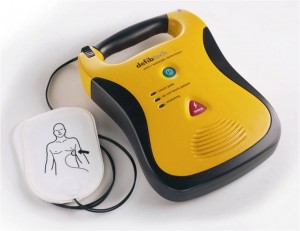Brigham Innovation Hub hosted its third Collaboration Night on October 27, 2014 with Boston Children’s Hospital. The evening’s theme was ‘Human Factor Design Thinking in Healthcare.’
Our panel included Wilma Chan, MD, M.Ed. in BWH Emergency Medicine, Salim Afshar, MD, Children’s Hospital Plastic & Oral Surgery and Expert-in-Residence at Harvard iLab and Amy Cueva, Founder and Chief Experience Officer, Mad*Pow Design Firm. The panel was moderated by Shubha Bhat, MD, resident in Internal Medicine at BWH.
1. Design thinking should make things intuitive, simple and meaningful.
“Design thinking is a systematic way to approach human interactions with objects, people and environments. Design thinking involves functionality and problem solving–all in an effort to make things intuitive, simple, and meaningful.” – Wilma Chan
Evolution of Defibrillators and How Design Thinking has Helped it Evolve
Examples of Design Thinking in Healthcare:
- Improving a patient’s experience by designing a hospital room with natural light and a family sleeping area
- Building low-cost incubators for premature babies in under-served areas of the world
- Developing a service that delivers pills based on time of administration rather than by medication type to increase adherence.
2. Design thinking is a tool that allows us to break acquired barriers around consultation and action.
“You have to think about the experience of patients, clinicians, nurses and staff in a harmonious manner. If you want to create optimal outcomes, you have to find cohesiveness across the whole system.” – Salim Afshar
3. Involve the people who will be affected by the solutions in the process of creating them.
“This mantra is used to succinctly communicate the core of human-centered design. When we truly understand the context of use and real human needs for a product or service, we have the inspiration and information needed to design excellent experiences.” – Amy Cueva
“Understanding our patients’ underlying motivations and emotions and harnessing them to spur innovation has the potential to improve the quality of our medical interventions and the quality of our patients’ lives. “- Shubha Bhat
4. Thinking like a designer is challenging for clinicians so beware potential pitfalls.
- Risk Aversion: “Clinicians are averse to risk and don’t like putting themselves in vulnerable positions to let ideas fumble and fail, or to let patients/users be in the drivers’ seat.” – Wilma Chan
- Perfectionism: “Many perfectionists in the physician cohort so testing out rough or low-fidelity prototypes as part of the design process may be quite uncomfortable for doctors.” – Shubha Bhat
- Over committing to a particular solution: Be open to the idea of changing the solution frequently to fit a real problem, the needs of the challenges that truly exist.” – Wilma Chan
5. Designing for emotion will tell us where we need to focus, where we are doing well, and where we need to improve.
“What we remember about an experience is what we felt when it was happening. We may have gotten the information we needed, but did we feel frustrated, or did the ease of information access give us a thrill? Designers are now looking at how to research emotion, design for emotion, and validate that the design is eliciting the emotions that were intended.” – Amy Cueva
—
To learn more about Design Thinking in Healthcare, check out our video interviews with our panelists.
Innovation Hub Interview with Salim Afshar:
Innovation Hub Interview with Wilma Chan & Shubha Bhat:




Leave a Reply